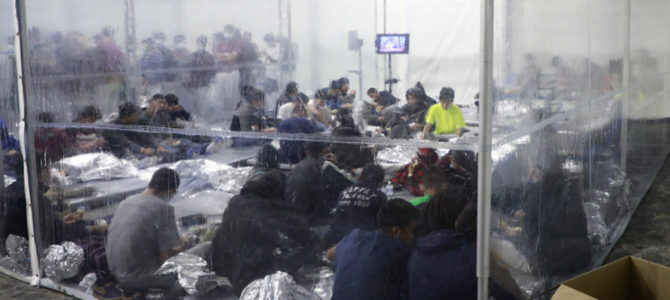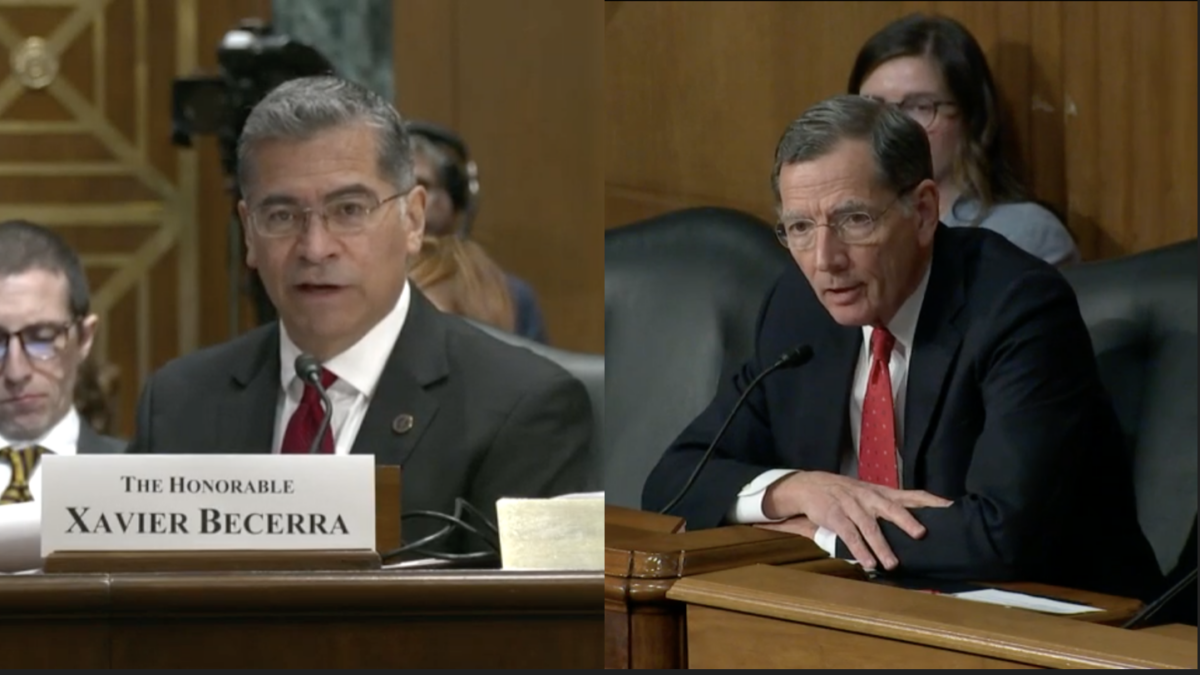
As the crisis at the southwest border deepens, with youth detention centers overcrowded and federal border agents overwhelmed, a counternarrative is taking shape in the corporate press. There is no border crisis, we’re told. In fact, the whole thing is panic-mongering stoked by Republicans to hurt the Biden administration.
“There is no immigration crisis,” runs one headline at The Week. “So After All That There Is No Border Surge?” runs another at Esquire. Even if there is a crisis, says Axios, it pales in comparison to the 2019 crisis under Trump.
But the no-border-crisis take that most deserves a response comes from The Washington Post’s “Monkey Cage” section, where an associate professor and two PhD students at the University of California at San Diego argue that the data from U.S. Customs and Border Protection show no significant surge in illegal border crossings, a claim that has since been repeated by the Post’s Jennifer Rubin and others.
Parroting President Biden’s ambassador to Mexico, Roberta Jacobson, the three UCSD academics say that what’s happening now is merely the result of “pent-up demand” from migrants would have come last year but for the pandemic, plus the usual spring surge that comes with better weather in South Texas.
To make their case, they analyze data released earlier this month by CBP that breaks out border apprehensions by month. Indeed, the data show an increase from January to February in 2021, 2019, and 2018, with a slight decrease in 2020 due to pandemic border restrictions put in place by the Trump administration.
Likewise, the authors are correct that illegal immigration is seasonal; it generally begins rising in February as temperatures warm in South Texas, peaks in May, and drops off in the hotter summer months. They made a chart combining all monthly apprehension data into one chart covering 2012 to 2020 to demonstrate this seasonal pattern, which is a neat trick, but anyone who has ever covered the border knows this is how it works — it’s common sense.
But seasonality is not an antonym for extraordinary, and what’s happening now is both seasonal and an extraordinary, crisis-level surge. It can’t simply be waved away by a rhetorical sleight-of-hand about “pent-up demand.” (More on that later.)
How do we know? It’s what the data plainly suggest. As Art Arthur of the Center for Immigration Studies laid out in a blog post Wednesday, the Post’s analysis failed to mention that border apprehensions in February, the year’s shortest month, reached a 15-year high with 97,000 apprehensions. Not since 2006 did we have so many apprehensions in the month of February.
That’s important because if you look at the chart combining all monthly data from 2012 to 2020, you see that February is the second-slowest month for apprehensions on average, after January. Therefore, Arthur explains, “if we can expect to see Border Patrol apprehensions at the Southwest border to exceed almost 97,000 for the next 10 months, by definition we are looking at a historic migrant surge.”
How big of a surge? For the sake of argument, let’s be conservative and say that monthly apprehensions for the rest of the year will continue to exceed what they were in 2019 — the last time we had a major border crisis, with more than 851,000 apprehensions — by roughly the same amount they did in the first five months of this fiscal year.
Now, I’m no academic, but I know how to use a calculator, so I know that CBP data show monthly apprehensions in the first five months of this fiscal year exceeded 2019 levels by an average of about 34 percent. If we apply that average monthly increase to the entire year, we’ll end up with more than 1.14 million apprehensions. The last time we arrested that many people at the southwest border was 2005.
So much for the numbers. They clearly show a crisis-level surge. As for the claim that all these additional apprehensions represent “pent-up demand” from 2020 when the border was effectively closed because of the pandemic, we have to ask: pent-up demand for what? Asylum? Entry into the United States?
The Post’s academics don’t quite say, maybe because they’re not that informed about how illegal immigration works. They argue that the expulsions authorized by Trump during the pandemic “delayed prospective migrants rather than deterred them — and they’re arriving now.”
Well, yes, they’re arriving now because there was a major policy change when Biden took office that eliminated the deterrent of being expelled from the United States upon arrival. Generally speaking, migrants don’t make the expensive and dangerous journey through Mexico and into the United States unless they think there’s a good chance they can stay, and Biden has given them a good chance.
Instead of expelling nearly everyone who arrives at the border, unaccompanied minors and increasing numbers of family units are now being admitted (despite the Biden administration’s insistence that it is expelling most family units). That’s a major “pull factor” for illegal immigration.
A bipartisan report issued in April 2019, in the middle of the last border crisis, found that the major “pull factor” bringing migrant families over the border was the practice of releasing them with nothing more than a notice to appear before an immigration judge at some future date. The average time then to process an asylum case was more than two years, and since only about 15 percent of family units are likely to be granted asylum, there’s a powerful incentive to get into the country by any means, whether or not you have a strong case — or any case — for being granted asylum.
Those pull factors that existed in 2019 are even stronger now because in some parts of South Texas, where Border Patrol agents are overwhelmed, migrants are being released without even a notice to appear before an immigration judge. Democratic Rep. Henry Cuellar, from South Texas, told the Washington Examiner on Thursday that Border Patrol agents in the Rio Grande Valley, by far the busiest stretch of the border, have now released about 2,000 people without notices to appear in court—up from just 150 people on Monday.
That means federal authorities on the border are so overwhelmed they are releasing people who were apprehended after crossing the border illegally — a misdemeanor the first time, a felony offense for subsequent crossings — in hopes that migrants will initiate court hearings on their own.
All of which to say, there is no “pent-up demand.” People in Mexico and Central America are responding to incentives and changes in policy enacted by the Biden administration. If Biden had kept President Trump’s strict border measures in place, there would be no “pent-up demand” and likely no dramatic increase in illegal crossings, because if people don’t think they can get in, they don’t come. But with the deterrent of expulsion gone, and growing evidence that if you can get in, you can stay, they are coming.
And if the numbers so far are any indication, more of them will come this year than we’ve seen in at least 15 years. By any definition, that amounts to a crisis, even if the academics at the Washington Post won’t admit it.









